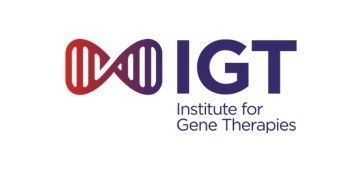General Information
There are several laboratory tests that can be undertaken to confirm the diagnosis of Barth syndrome. Finding a tafazzin gene (TAZ, also called G4.5) mutation that clearly disables protein synthesis or function is the most definitive test for Xq28-linked Barth syndrome. In addition, the finding of a severely depressed level of tetralinoleoyl-cardiolipin [Schlame et al (2002)], [Vreken et al (2000)] in platelets, cultured cells, or muscle tissue appears to be specific for Barth syndrome caused by mutations in the tafazzin gene. However, because completion of these tests can take more time than desirable when a child has critical cardiac disease, other laboratory tests, as discussed below, in the appropriate clinical setting can be all but diagnostic of Barth syndrome. Although not all clinicians follow the regulations, it is important to recognize that diagnostic information that is given to a patient or patient's family must be provided by a laboratory that has met that standards and approved by Clinical Laboratory Improvement Amendments (CLIA) {Note, only applies to US}. Much genetic and biochemical testing today is provided very generously by research laboratories, but, technically, this information cannot be given to patients or used for patient management decisions.
Specific Laboratory Testing for Barth Syndrome
Find a Laboratory in Your Region
3-Methylglutaconic Aciduria and Acidemia
As noted above, to our knowledge, increased blood and urine levels of 3-methylglutaconic acid (3MGC) has been found in all Barth patients appropriately tested by quantitative means, except for two patients who had a single transiently normal level during a neonatal cardiological crisis. Because there appears to be little variation in the level of 3MGC with the time of day, and only slight increase in response to large amounts of dietary protein, blood and urine specimens can be "spot" samples. However, as for most biochemical tests, sampling after overnight fasting or just before the next meal or feeding eliminates potential dietary artifacts. Blood 3MGC testing is more meaningful than urinary analysis, but must be done by isotope dilution gas chromatography-mass spectrometry. Laboratories meeting these standards may be found on the website of National Center for Biotechnology Information (NCBI) Genetic Testing Registry (GTR).
Complete Blood Count
Peak absolute neutrophil counts (ANC) often are fully normal (> 2000) and lows often are zero. Thus, serial blood counts may be necessary to determine if a suspected Barth patient has neutropenia. For diagnostic purposes, the ANC should not be determined when a patient is acutely ill, since the ANC typically is normal or increased during a bacterial infection after the first or second day. In addition to neutropenia, Barth patients often have relatively or even absolutely increased monocyte counts, without apparent cyclic changes.
Echocardiogram
In a few monitored Barth pregnancies, dilated cardiomyopathy has developed in utero during the last trimester [Bleyl et al (1997); Cardonick et al (1997)], but most often, it is not clinically manifested until sometime in the first six months. In a few patients, the heart function may be normal throughout childhood or may become abnormal for the first time at any age during childhood. The echocardiogram typically shows mild ventricular hypertrophy and more left ventricular dilatation with abnormally low shortening and ejection fractions. In addition, there often is more prominent than normal ventricular trabeculation, occasionally severe enough to warrant the diagnosis of "left ventricular non-compaction" [Bleyl et al (1997); Ichida et al (2001)]. There also is an increased incidence of structural heart defects (at least 10% of patients) in addition to left ventricular noncompaction, including ventricular septal defects (sometimes multiple) and transposition of the great arteries.
Cardiolipin Analysis of Muscle, Platelets, or Cultured Cells
Although the diagnostically important finding of cardiolipin deficiency was reported in 2000, there is only one approved (CLIA-equivalent) laboratory in the Netherlands for quantification of cardiolipin in platelets collected by routine blood sampling. There are also a few research laboratories that can do this difficult analysis, but, to our knowledge, none is approved for clinical application of the analysis. However, these laboratories have IRB-approved clinical protocols and can accept samples for research purposes. In addition to platelets, a diagnostically low level of cardiolipin can be demonstrated in cultured fibroblasts or in heart or skeletal muscle, if these stored samples are the only ones available. Because of the availability of TAZ mutation analysis, there no longer is a role for muscle or cardiac biopsy in the diagnosis of Barth syndrome, but such tissue may be available from testing performed before the diagnosis of Barth syndrome was suspected.
DNA Sequence Analysis (Genetic Testing) of the Tafazzin Gene (TAZ, also called G4.5)
Barth syndrome is caused by mutations in the tafazzin gene (TAZ, also called G4.5) gene on the X chromosome. Because males have only one X chromosome, they will have signs of Barth syndrome if that X chromosome carries a mutated tafazzin gene. In contrast, females who carry an X chromosome with a tafazzin mutation are unaffected because they have a second X-chromosomes with a normal tafazzin gene that is dominant to the recessive tafazzin gene. Many different disease-causing tafazzin mutations have been found, and each mutation is specific for a given patient and his family. Genetic testing for Barth syndrome involves several steps:
DNA preparation
- Amplification of the tafazzin gene (TAZ, also called G4.5) by PCR (polymerase chain reaction)
- DNA sequencing of the PCR products
- Comparison of the patient´s tafazzin sequence to the normal reference sequence
- Checking sequence differences in the coding segments against the mRNA sequence and its translation product (protein sequence) to determine possible effects of the mutation on the function of the tafazzin protein












